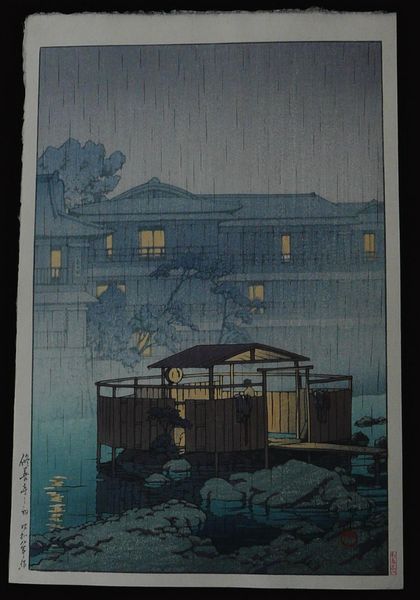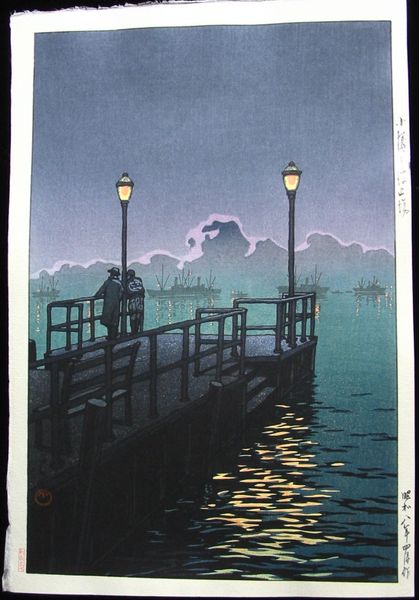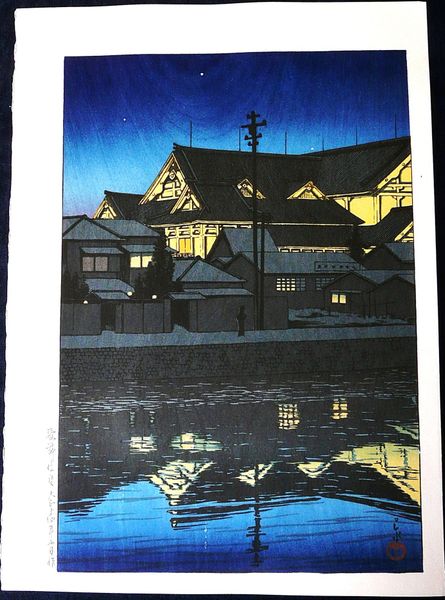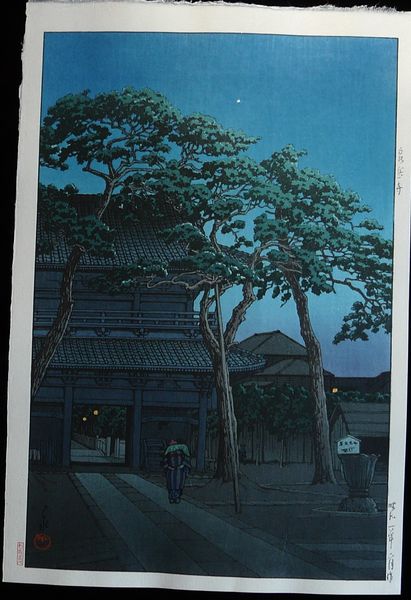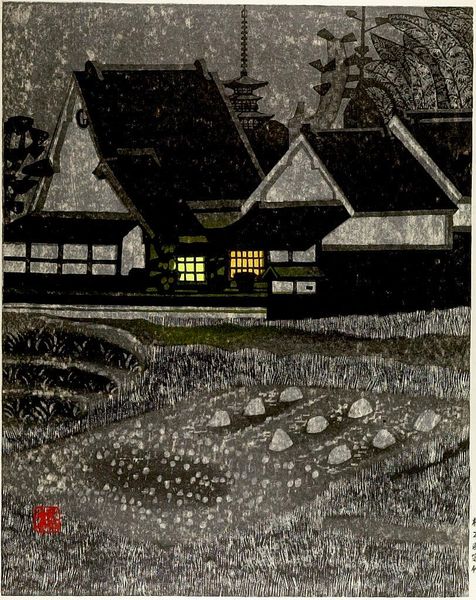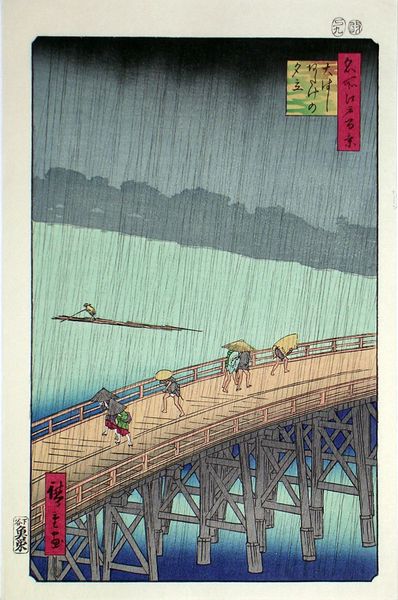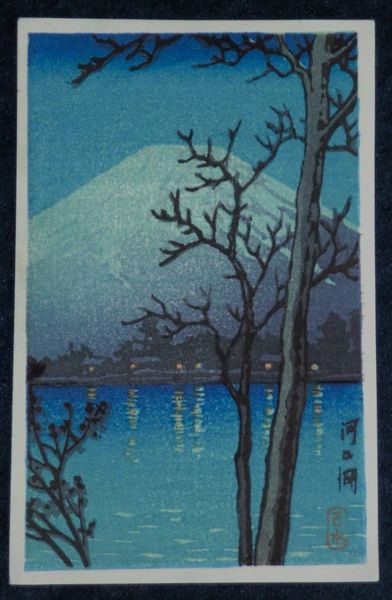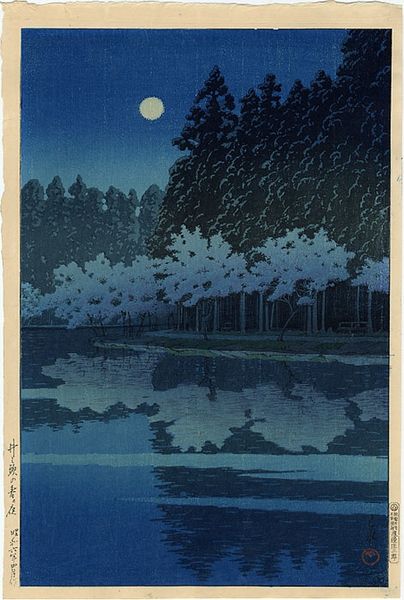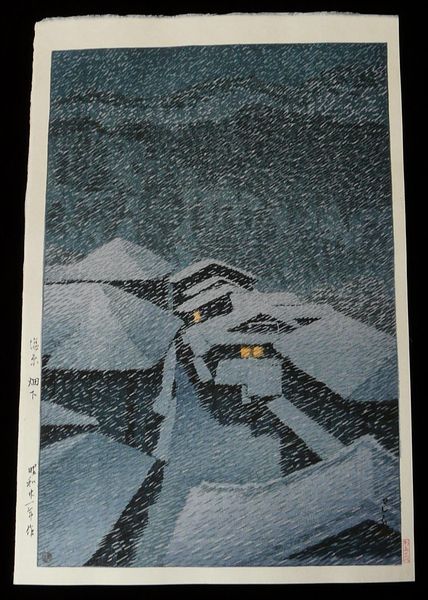
Copyright: Public domain Japan
Curator: This is Hasui Kawase’s “Rainy Night at Maekawa,” a woodblock print completed in 1932. It's part of the Shin-Hanga movement, reviving traditional ukiyo-e techniques. Editor: It's striking! A sense of melancholy just washes over me, looking at this solitary figure walking in the downpour. The reflections of light on the wet street are beautiful. Curator: Absolutely. Kawase was deeply interested in capturing fleeting moments of urban and rural life in early 20th century Japan, using printmaking to achieve that sense of immediacy. He depicts the social spaces that define this street scene. Editor: Knowing it’s a woodblock print gives me a whole new appreciation. Think of the labor involved! Carving separate blocks for each color, precisely aligning them… that intense physicality of production is central to the art's meaning. Curator: Exactly, and that level of detail was incredibly important within the Shin-Hanga movement. There's a clear move towards fine art from what some critics may consider being simple craft production. These prints became quite collectable among Japan's intellectual circles, solidifying art's role within society. Editor: Look closely. You can almost feel the dampness in the air, thanks to the careful use of line and color to represent the rain. The artist even coaxes subtle tonalities out of the woodblock medium to really evoke wetness, but it's interesting to remember the artist had to manage and control every tool and drop of ink, creating an object for distribution. Curator: His engagement with light, shadow, and perspective, very much rooted in traditions, creates a dreamlike, almost nostalgic view of a rapidly changing landscape. It documents the physical culture of Japan as its infrastructure shifted through modernisation. Editor: Considering that material, I now also reflect on who may have handled or even purchased and eventually used this print for education or display in domestic spaces… The chain of production to consumption tells many unique, small stories. Curator: Viewing "Rainy Night at Maekawa", we appreciate the historical moment and the traditional practices from which it was born, and how societal contexts have shaped the reception of prints within Japanese society. Editor: Agreed. Beyond the aesthetics, acknowledging the process—the very labor involved in the carving and printing—makes it even more meaningful.
Comments
No comments
Be the first to comment and join the conversation on the ultimate creative platform.
